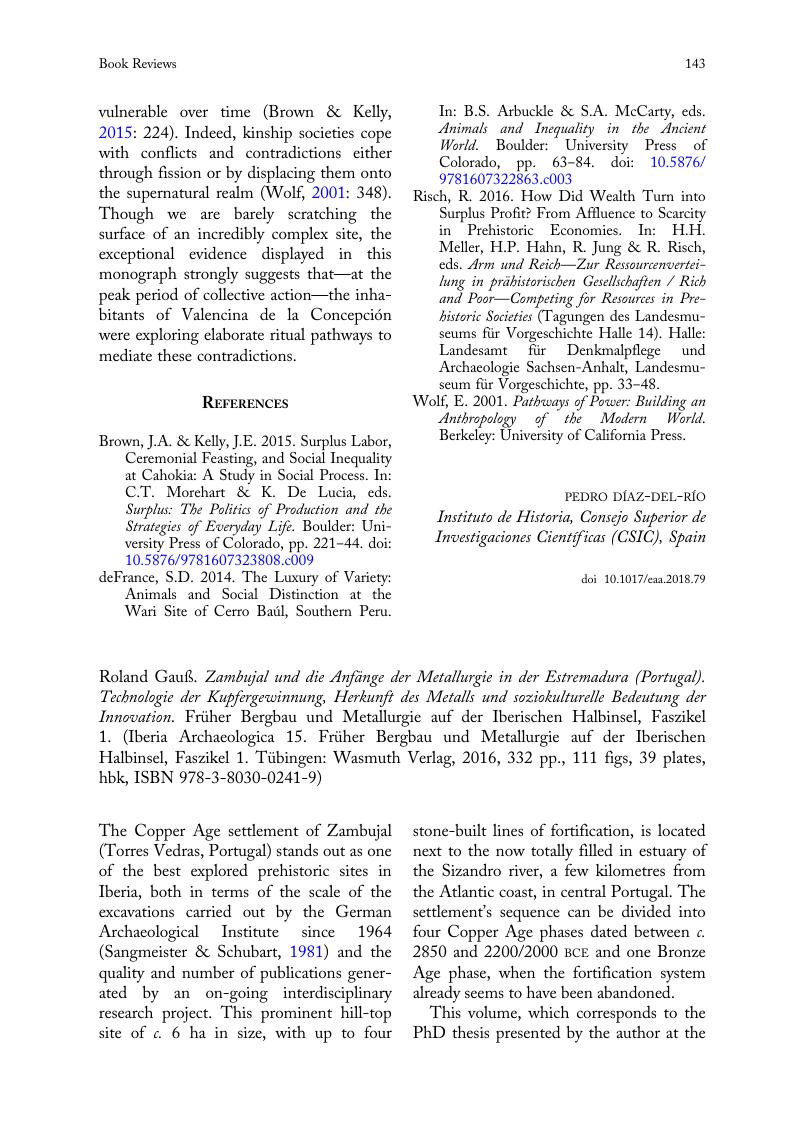Sangmeister, E.
1995.
Die Kupferfunde aus den Grabungen 1964 bis 1973. In:
Sangmeister, E. &
Jiménez, M.C.,
Zambujal: Kupferfunde aus den Grabungen 1964 bis 1973—Los amuletos de las campañas 1964 hasta 1973 (Zambujal Teil 3, Madrider Beiträge 5.3).
Mainz:
Zabern, pp.
1‒
155.
Google Scholar 